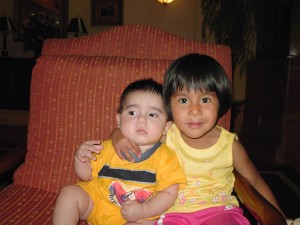For months I have been vaguely aware of the pro-international adoption organization, Both Ends Burning, whose subheading is “a global initiative to transform the process of international adoption.” The movement’s founder, Craig Juntunen, and his wife, Kathi, are adoptive parents to three children from Haiti. Juntunen has published a book, Both Ends Burning: My Story of Adopting Three Children from Haiti (Outskirts Press, 2009), and is producing a film, Wrongfully Detained, scheduled for release in September 2011.
I haven’t read the book and know little about the organization beyond the information on its website. But today I came across this ABC15.com interview with Craig Juntunen, Valley group aims to make international adoption easier, and was able to listen to and watch Juntunen discuss the subject himself. The clip contains footage from what appears to be orphanages around the world, as well as a delightful singing performance by Juntunen’s son. Many of Juntunen’s views on international adoption mirror my own, including his belief that children everywhere deserve a nurturing, permanent home. However, I believe that government bureaucracy and shutdowns–current or threatened–and not expense or length of time, are the prime deterrents to international adoption. (Expense and length of time are folded into the bureaucracy, in fact.) More people might consider adopting internationally if they weren’t so afraid of the process. And that, of course, requires careful collaboration and negotiation between countries to create a system that is transparent and fair to all, which is another extremely complicated subject.
But anything that raises awareness of international adoption deserves to be shared. Please watch and see what you think.
On a different and related subject: To cover the costs of adopting her then-14-month-old daughter, born in China with a cleft lip and palate, Kateri Lambrose baked cakes. Hundreds of them. I’m posting the link to Cakes create a miracle not only because it includes the recipe for “Kateri’s Chocolate Candy Bar Cake,” but also because I was so moved by Kateri’s story. I’ll end with her words:
“You go into this thinking you’re going to bless this child, and give them a family they deserve. In reality, it’s the opposite. She has blessed our family so much… I cannot imagine our lives without her. It’s incomprehensible.”
I know what she means.



 ShareThis
ShareThis